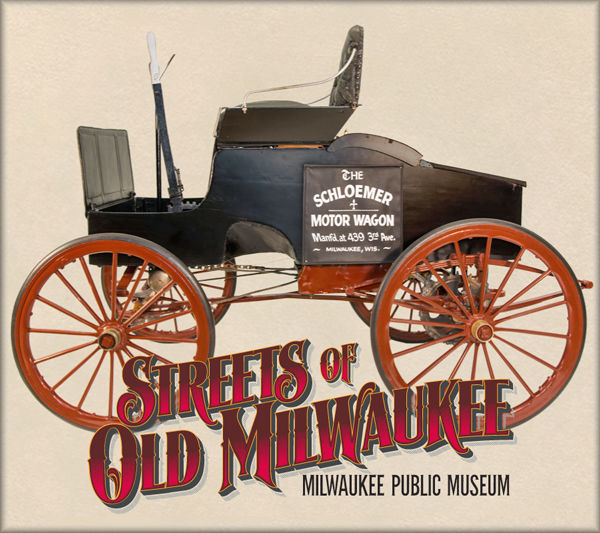

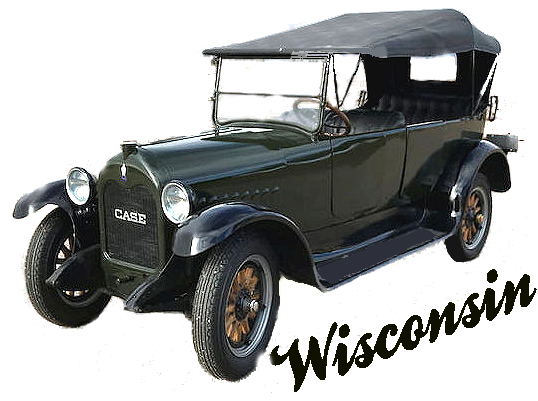
Mobile users:
For best results, view in Landscape mode.
In 1873, the first steam-powered, self
propelled automobile in the U.S. was
designed and built by Reverend J. Wesley
Carhart of Racine. Carhart named
the car "Spark."
It was driven by a 2-cylinder steam engine,
steered by a lever, and had a speed of 5 MPH.
At the 1908 International Automobile
Exposition held in Paris, France, Carhart
was addressed as the “Father of Automobiles”
and received a cash award and a certificate
of honor for his invention.
Carhart was a minister of the Methodist
Episcopal Church, in Racine, Wisconsin.
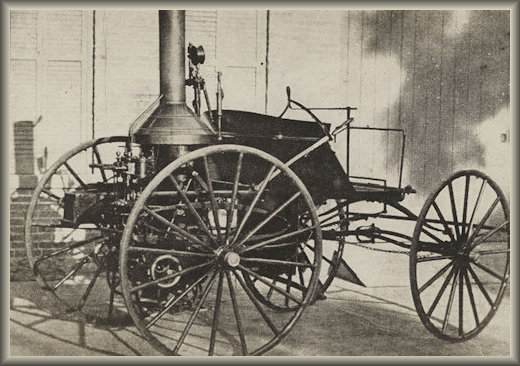
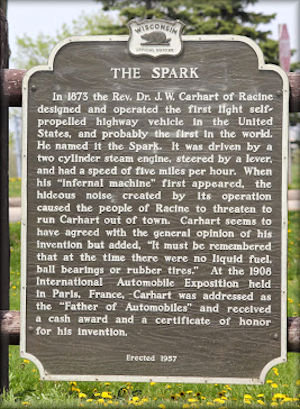
Erected 1957 by Wisconsin State
Historical Society in Racine
A. O. Smith Corporation:
In 1904, the first steel automobile
frame was produced by Arthur
Oliver Smith ( A. O. Smith Corp.)
in Milwaukee.
Mechanized Henry Ford's assembly
line process in 1913, becoming the
first company to mass produce
car frames.
By 1920 the company's plant produced
10,000 frames per day.
A. O. Smith started the world’s
first fully automated automobile
frame assembly plant, he called it
“the Mechanical Marvel”.
Capable of making a frame
every 8 seconds.
Milwaukee Automobile Co.
1900 - 1902
In 1899, the Milwaukee Automobile Company
was founded by W.H. Starkweather,
Herman Pfiel, and W.G. Smith to build cars
that were not a “radical departure from all
other types” of automobile, except that
they were using steam power.
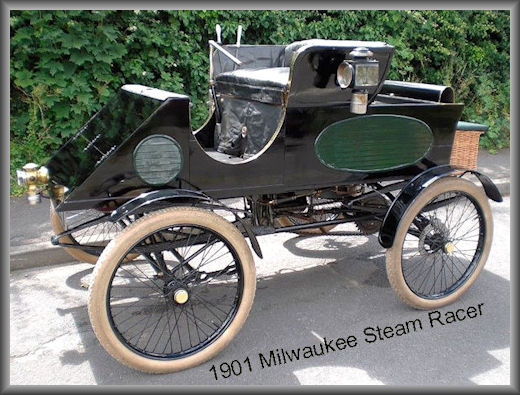
America's First Car:
The Schloemer "Motor Wagon" was the
first gasoline-powered car built in the
United States.
Godfrey Schloemer (1842 - 1921) was a
coopersmith, mechanic and inventor who
lived on the south side of Milwaukee.
In 1880, Schloemer conceived the idea
of a "motor wagon" with an attached
gasoline engine to make it self-propelling.
In 1889, mechanic and inventor,
Godfrey Schloemer invented the
Motor Wagon in Milwaukee, which some
have hailed as the first workable gasoline
engine automobile ever built in the
U.S., four years ahead of
Charles and Frank Duryea.
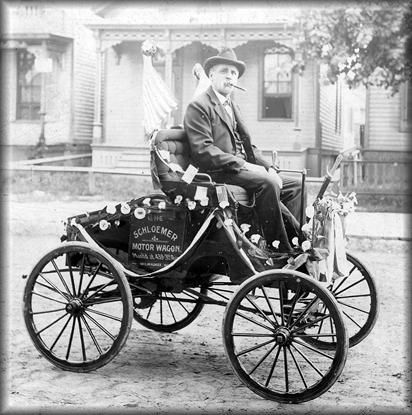
Schloemer had to improvise on his
Motor Wagon for an igniting system to
fire the fuel, since at that time there was no
such thing as a spark plug.
He used a home made sparking mechanism
consisting of two points of steel striking
together causing a "spark" to ignite the
gasoline fumes in the single cylinder
engine.
These points were fragile, and had
to be replaced every few miles.
Schloemer had the engine made according
to his design by the Sintz Gas Engine
Company of Grand Rapids, Michigan.
The engine was placed below the seat,
and was powered by a belt system.
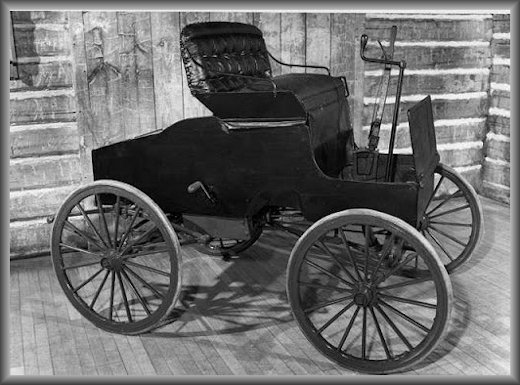
In 1890, Schloemer he drove his "motor wagon"
down the streets of downtown Milwaukee
for the first time he stopped at
Spiegel's Drug Store on the corner of
N. Plankinton Ave (then West Water Street)
and Wisconsin Ave
to purchase some items, when he came
out of the store there was a large crowd
around the car and found it necessary to
ask a police officer to clear a passageway
for him to leave.
Once he started the motor, the very loud
noise scared the crowd and they immediately
scattered.
Schloemer's car had a speed of 12 mph.
In 1892, Schloemer designed and patented
a carburetor, which was known as
the Gottfried Schloemer carburetor.
He used kerosene lamp wicks in the
center of it to get the gasoline from
the gas tank into the cylinder of the
motor to be ignited.
In 1892, Schloemer looked for financial
backing for his plan to establish a car
factory in Milwaukee, but the market crash
of 1893 canceled that plan.
Schloemer then bought a farm and applied
his mechanical knowledge to
developing farm equipment.
At the time of his death certain local
reports even claimed him as the designer
and maker of the first gasoline-powered
automobile in the world, although that honor
is usually given to Germany's Karl Benz
in 1885.
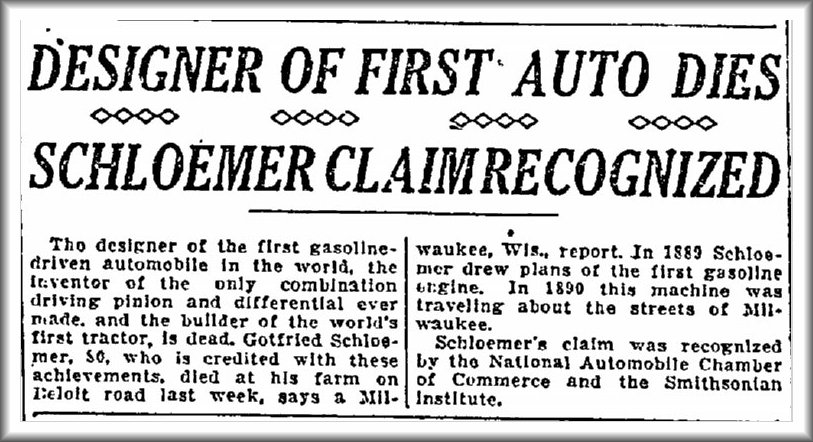
Schloemer's "Motor Wagon" was recognized
by the National Automobile Chamber of
Commerce, Smithsonian Institution, and the
Ford Motor Company as the first gas propelled
automobile in the world.
The Motor Wagon was later donated to
the Milwaukee Public Museum.
It is still there to this day and touted as
"The first practical gasoline
powered auto in the nation".
